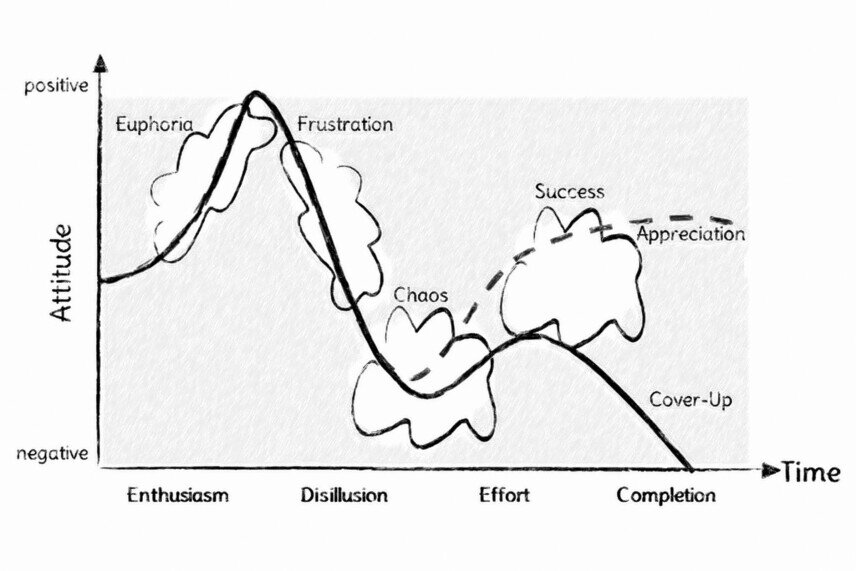Project destiny
The destiny of a project describes the participants' positive or negative attitudes over time. The graph passes independently besides the usual phases initialization, definition, planning, control, and conclusion. Although in the meantime, the process of a project was optimized and standardized by institutions (e.g., PMI, GPM). Nevertheless, again projects seem to fail more frequently - time and budgets are exceeded. Measures sometimes fail. One reason is the lack of attention to the mental state of the involved people in their positive or negative attitudes. The earlier these are considered, the quicker the project runs stable

Project destiny consists of four phases: Enthusiasm, Disillusion, Effort, and Completion.
- Enthusiasm
At the beginning of the project, interesting goals and the search for capable employees fuel enthusiasm. Participants of the project are wooed and selected, resources provided, and thrilling contents published. Since proficient employees are assigned to projects, the selection strengthens the self-confidence. In this phase, euphoria should not be stopped, but especially not needlessly be stimulated.
- Disillusion
As soon as the first obstacles emerge, euphoria turns into frustration. There are tensions between team members, missing resources make work more difficult, and the first technical problems occur. Depending upon the height of the initial enthusiasm, the crash can be stronger than expected. Early and regular discussions reduce frustration.
- Effort
Disillusion burdens the positive attitude of the people concerned and drives the initiative into chaos. Missing answers and disappointments, as well as organization deficiencies, pollute project work. By analyzing the participating stakeholders, approaches for improvement can be found. The revised planning and other supporting measures eliminate the emerged chaos and lead to an improved attitude.
- Completion
The success of the measures affects the attitude positively or negatively. Hushing up undesired attitudes covers difficulties for a long time and prolongs the project unnecessarily. It can even fail. The repetitive mention of the project improves the attitude of the team.
The project's fate is decided in the preparation, and as soon as the interim results of the activities meet each other and are no longer overseen. Smart coordination of the sub-projects dissolves the chaos.

